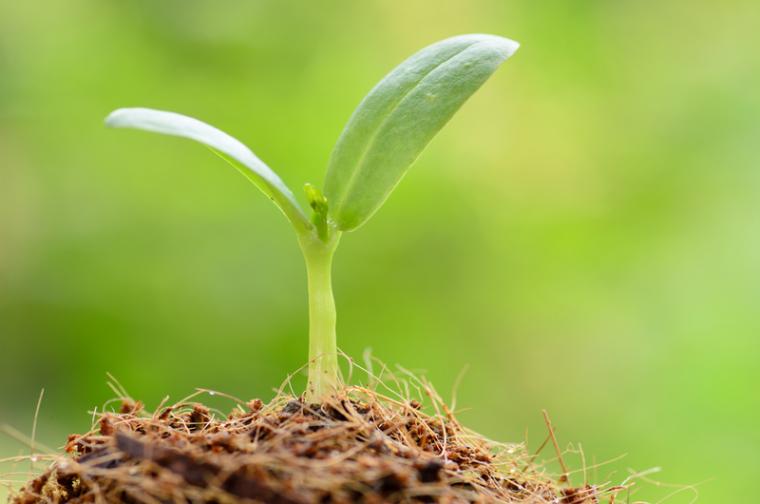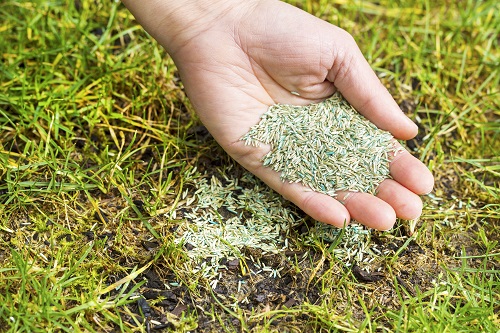

There’s a shortage out there and it’s not toilet paper. It’s grass seed, something needed for facilities like golf courses and soccer fields. And this time of year, as baseball and softball facilities are seeding in preparation for next spring’s playing season, the shortfall, and a corresponding rise in the price of available seed, will be evident.
So what’s behind the problem? And how are people getting around it?
First, the main source of the problem: Droughts out west, where much grass seed is harvested, have created enormous issues. And it all starts in Oregon, the world's major producer of cool-season forage and turf grass seed and a widely recognized center of expertise in seed production.
In fact, according to the Capital Press, grass seed was Oregon’s fifth-most valuable agricultural commodity in 2019, with a crop worth $517.4 million, according to Oregon State University (OSU).
According to KEZI, the local ABC affiliate in Eugene, Oregon, much of the state was under extreme or exceptional drought conditions, including high temperatures and a lack of precipitation, over the summer. That made for extremely difficult growing conditions for all types of crops, but one of the hardest hit was tall fescue, a type of grass seed, causing concern about a possible worldwide grass seed shortage.
"Across the board, fescue in general was down. Mine was probably about 45 percent is what I figure this morning, well, between 45 percent and 50 percent off on yields," Denver Pugh, a farmer in Shedd, Oregon, told reporters at KEZI.
Pugh, who has been a farmer for 24 years, told KEZI he's never seen anything like the conditions this past growing season. "There is not going to be near enough supply of seed to supply all the markets that are wanting seed," Pugh said.
GCM, the e-newsletter for the Golf Course Superintendents Association of America (GCSAA) noted that for once, the pandemic was not entirely to blame – although it did lead to increased buying of grass seed, since many homeowners were inspired by their lackluster lawns and decided to do something about them. (And that same pandemic also brought out the golf community in force, with plenty of people taking up the game, and plenty returning to it, causing even more traffic on the greens and lending to an increased need for upkeep, including seeding).
“People can think it’s a big conspiracy theory all they want, but you know what? It’s just not there. It’s simple supply and demand,” added Leah Brilman, PhD., director of project management and technical services for DLF Pickseed North America in Halsey, Oregon.
“Nothing has gone right in grass seed production for the last year,” added Adam Russell, director of product development for Mountain View Seeds in Salem, Oregon. “For a place chosen for its stability and mild weather, it has been everything but. And with demand staying high, there’s just not enough to go around.”
All those factors led to an enormous hike in the price of available seed, with costs nearly double that of last year. And for those who have not bought in advance, buying now to reseed fields so that they are lush for spring play – well, it’s going to be a pain in the wallet.
“In terms of availability, it’s a little bit of a scramble,” Jim Schmid, GCSAA Glass A superintendent and director of golf course operations at The Lakes Country Club in Palm Desert, California, told GCM reporters last week. “At this point, I think most everybody has secured access to the seed they need, but a lot of people might have had to change varieties. Not everybody has gotten exactly what they wanted, but I think most everybody has come up with something acceptable.”
The Lakes Country Club obtained 120,000 pounds of perennial ryegrass in September in anticipation of an early-October overseed. Schmid paid $1.07 per pound last year, $2 this year.
“We spend over $100,000 in seed, and I think that’s fairly typical for an 18-hole facility, and now you’re doubling that up. That’s a big number to double,” Schmid says. “When we took delivery ... we were excited to have it sitting there, waiting. A lot of people were nervous. ‘Is this stuff going to show up?’ This year, it’s coming down to the wire.”
But Oregon isn’t the only seed producer getting hit with poor conditions that result in a poor yield, according to OnTheGreenInc.com. The production of perennial ryegrass in the southern reaches of Manitoba has slowed to a crawl. The drought there caused a “down year” for the crops more dramatic than typical predictions – an alarming drop-off of 60 percent. Washington State and Idaho serve as harvest hubs for dryland bluegrass. The drought has affected yields there, as well as fields in Kentucky. And because of decreased pollination rates (meaning a shortage of bees and butterflies, thanks – or no thanks – to overuse of chemicals, as well as other factors), Minnesota’s grass seed yield also suffered. So did that of Texas.
It is, industry experts note, a domino effect. The rise of industry costs is predicted to continue through 2023, which will complicate acquisition efforts for both vendors and consumers. This has even disrupted seed supply around the world.
The industry itself has also seen some change. Scotts Miracle-Gro entered into an agreement to purchase the turf division of Turf-Seed, as well as Columbia Seeds, just one of a handful of mergers and acquisitions in the seed industry that affected the supply chain this year.
Some field managers and course supervisors are trying to find ways around the shortage. A few have taken to using colorants on grass (painting it, in other words) to create the lush, green look they want. Others are trying mixtures of seeds they have not used (which may or may not be suitable for the sport, or the weather conditions). Some are reducing the amount of seed they use, and to fill in bare spots with materials like mulch or wood chips, particularly in non-play areas, a practice that started in drought-stricken California in 2015.
Some find they are a bit less affected because of preexisting practices. GCM notes that Wildhorse Golf Club in Henderson, Nevada, is one of these.
“We don’t overseed fairways. We stopped years ago because of environmental concerns and the price of seeds,” says Darden Nicks, GCSAA Class A superintendent and Wildhorse’s director of agronomy. “I could see other courses go to that possibly, too, if they can’t get grass seed this year. Some of the high-end clubs ... I don’t know if they could switch out.”
Others have decided to forego new seed altogether – but some managers say they can’t do that.
“Absolutely not,” Jared Stanek, Class A superintendent and director of agronomy at Toscana Country Club in Indian Wells, California, told GCM, “and I honestly don’t know what the price would have to be to convince the membership not to do it.”
The club usually does, in the words of GCM writers, “wall-to-wall reseeding” this time of year and does not intend to put a stop to that.
“We’re a high-high-end private club, and our membership fancies our club as one of the nicest clubs in not just the Coachella Valley, but the world,” Stanek adds. “It’s a world-class community property, and for them to change their practices ... it would take a lot. For other courses, that’s a calculation that probably should be started right now.”
And there’s another domino that could fall as a part of all this. Right now, many schools and venues are considering their budgets for renovating and building fields. The scarcity of seed – as well as the prolonged outlook for higher costs of it – could be something that will result in more synthetic turf fields being built.


